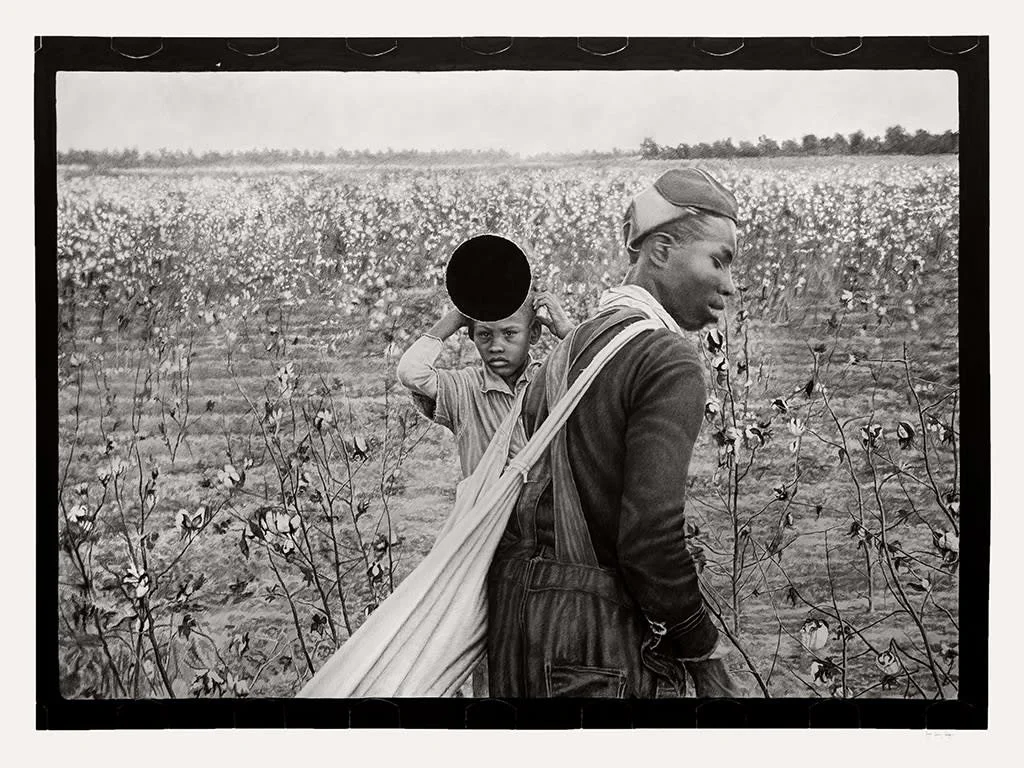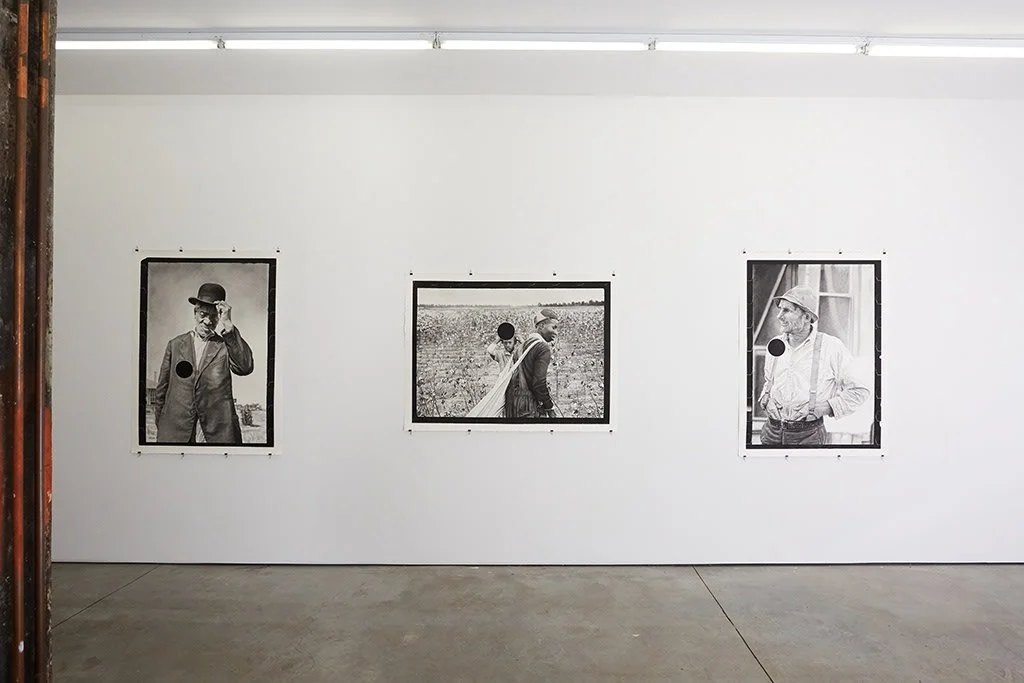QURAYSH ALI LANSANA and JOEL DANIEL PHILLIPS: KILLED NEGATIVE #28
Charcoal Drawing and Accompanying Poem
[Archive Text: “Untitled photo, possibly related to: “Young cotton picker, Pulaski County, Arkansas.
Schools for colored children do not open until January 1st so as not to interfere with cotton picking”
Original 35mm nitrate negative by Ben Shahn dated October, 1935. Courtesy of the Library of Congress.]
Killed Negative #28 / After Ben Shahn • 42in x 56.5 in • Charcoal, Graphite & Ink on Paper • 2020
lil jimmy turn his back side & keep pickin’
shrubs but i aint seen no white man look lak
him befo. skin cloud pale in jus’ cold days. leaf
eater mouth hair atop rusty lips. him talk
funny too. sing-song strange kinda warbler
tune. his words smilin’ at us tho. papa
say no truss no nicey-nice tom. dem
da ones get ya dead. lak in elaine. dats
where unkle jimmy lynched. why lil jimmy
wid us. so i cold eye mista hard. him
wanna know too much. why we aint in skool.
how i tell he aint from here tho. erybody know
nigga chirren skool start when too chilly to pick.
ABOUT THE PROJECT
”Killing the Negative”
“Killing the Negative” is an ongoing, multi-year collaboration between poet Quraysh Ali Lansana and draftsman Joel Daniel Phillips consisting of a series of poems and drawings in response to censored government photographs of the Great Depression. Phillips’ meticulous charcoal and graphite drawings are paired with poetic interventions by Lansana and other poets, both filling the purposefully vacant spaces left by government censorship and creating an entirely new conversation about power, representation, and the shaping of America’s historical narratives.
In addition to contributions by lead poet and editor Lansana, the body of work features poetic interventions from some of the leading voices in American Poetry today, including U.S. Poet Laureate Joy Harjo, North Carolina Poet Laureate Jaki Shelton Green and Dr. Randall Horton.
Commissioned by the Roosevelt Administration as a part of the New Deal, the original Farm Security Administration (FSA) images are of course, well known. Images like “Migrant Mother” by Dorothea Lange have become some of the most recognizable and important images in the American photographic lexicon. Less known, however, is the process by which these images were selected for publication: Roy Stryker was the head of the FSA, and for the first 4 years of the project, images he deemed unworthy were “killed” by punching a hole in the original negative.
The larger contemporary political landscape is one that makes many of the questions from the era of the Great Depression deeply resonant; questions of race, class, labor and compensation, land ownership, stratified socio-economics and ecological protection are embedded in the original censored FSA photographs. The collaboration between Lansana and Phillips responds to the echoing voids in the narrative created by the censorship, weaving new images and words into the spaces left by Stryker’s hole punch. Within the project, Stryker’s destructive editing process acts as a larger commentary on truth and the veracity of the historical record, pointing out the flaws in our reliance on this record, and calling into startling clarity the power that a single individual had to shape the collective understanding of an entire nation.


